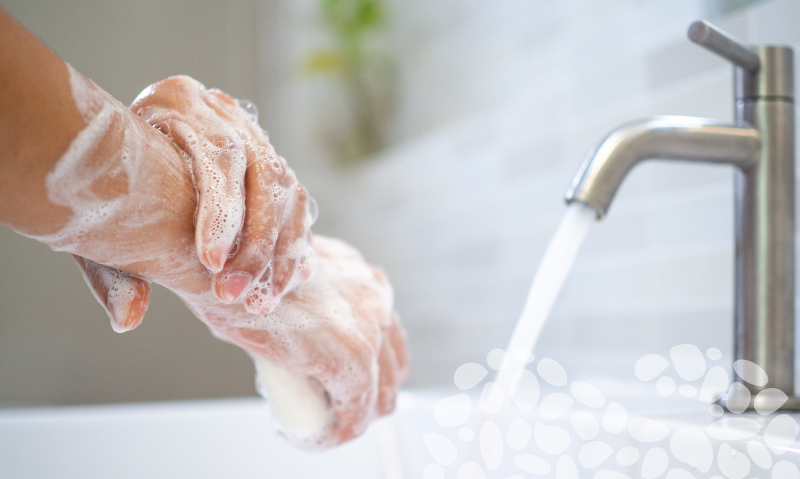Effective handwashing only takes 20 seconds.
Washing up after using the bathroom or before eating a meal can seem like second nature, but only a very small percentage of adults actually wash their hands properly. In fact, more than 95% of adults in a randomized study either didn’t wash their hands, didn’t use soap, or rushed through washing too quickly.
Improper handwashing habits can dramatically increase your chances of getting sick as well as contribute to an unsanitary environment for others around you. The good news is that thorough handwashing isn’t a lengthy or complicated process: it requires less than 30 seconds of your time.
 CDC-recommended guidelines for hygienic handwashing.
CDC-recommended guidelines for hygienic handwashing.
Here is the process the CDC recommends for proper handwashing:
- Use clean, running water when wetting and rinsing your hands.
- Always use soap—either plain or antibacterial.
- Work soap into a rich lather all over your hands.
- Scrub and clean for a full 20 seconds before rinsing.
- Dry using air or a clean, sanitary towel or paper towel.
When washing your hands, you want to pay especially close attention to adequate cleaning of all areas. Many people make the mistake of washing the palms but forget to scrub around the fingertips and fingernails, the two areas where bacteria generally congregate. Remember, the bacteria on just your fingertips can double after using the restroom, so be sure to wash well.
Last but not least, it’s crucial that you scrub and clean your hands for a solid 20 seconds. It’s very easy to underestimate the time. Consider setting a timer or reciting the “Happy Birthday” song twice to yourself while washing.
Prevent illness by washing your hands during these key times.
Proper handwashing can reduce your chances of getting sick by 20% for respiratory illness to upwards of 50% for cold symptoms and foodborne illness. Achieving this level of effectiveness is a combination of practicing thorough handwashing and regular washing before and after certain activities.
It’s important to wash your hands before and after:
- Cooking or preparing a meal.
- Eating a meal or snack.
- Touching your face or nose.
- Caring for someone who’s ill.
- Administering first aid.
Washing after these activities is especially important:
- Using the bathroom.
- Changing diapers.
- Handling pets or pet food.
- Handling garbage or trash cans.
- Coughing, sneezing, or rubbing your nose.
You should also wash up after you’ve been touching contaminated surfaces, even if you used hand sanitizer. Hand sanitizer and handwashing are a team, but hand sanitizer isn’t a replacement for the power of proper handwashing.
Providing a healthy, hygienic experience for our dental care patients.
Metro East Dental Care provides a hygienic environment for our patients and our staff. We follow strict sanitation guidelines and continue to pre-screen patients to ensure everyone we welcome into our office is healthy and feeling well.
Are you due for a visit? You can book your appointment right now by calling our practice or using this online form.

